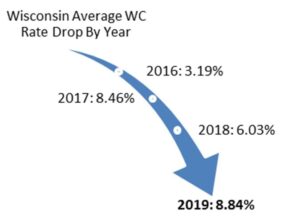The 5 Elements of a Comprehensive Retirement Plan

What You Need to Know
The decline of pension means planning for the distribution phase of retirement is more important than ever.
Morningstar has quantified five ways better financial planning decisions can help clients increase retirement income.
A holistic retirement plan should include a dynamic withdrawal strategy and tax planning.
You’ve probably heard the phrase, “It’s not your parents’ retirement.” How true that is today. The distribution phase of retirement financial and tax planning is very different from the accumulation process of investing and saving. And today, it is even more critical to plan for this phase than it has been in the past.
Retirement Planning History
During the rise of employer-provided defined benefit pensions, most older workers were able to count on two guaranteed sources of retirement income — a pension from their employer and Social Security. With two sources of guaranteed, inflation-adjusted income, in addition to savings, retirees could predict and rely on a specific consistent income and standard of living in their later years.
The rise of 401(k), 403(b), IRA and Roth retirement accounts in the late 1970s through 1990s shifted the burden and risks of investment decisions for today’s workers largely to the employee, with some employer contributions.
However, many individuals have not worked for employers who offered these types of accounts, could not count on using them to their fullest potential or simply were not able to save. Others who took on the task of contributing, investing and monitoring their own accounts have achieved mixed results. Those who have work with financial professionals found their advisors, understandably, focused on the accumulation of their assets.
For all of these workers now approaching retirement, the need for their financial professionals to understand the value of providing comprehensive and holistic retirement planning and management is greater than ever.
Comprehensive Retirement Planning
As first mentioned in the 2013 Morningstar study, Alpha, Beta, and Now … Gamma, an increase in retirement income can be quantified by using these five strategies: 1) a total wealth framework (including Social Security), to determine optimal asset allocation, 2) a dynamic withdrawal strategy, 3) incorporating guaranteed income products (i.e., annuities), 4) tax-efficient allocation decisions and 5) portfolio optimization that includes liability-relative asset allocation optimization.
The financial terms “alpha” and “beta” refer to the measure of time and effort spent on selecting “good” investment funds and managers, the alpha decision, and the allocation of assets or the beta decision.
When it comes to retirement income planning, these are just two elements of the numerous financial and tax planning decisions that can have a significant effect on the longevity of portfolios and resulting secure standard of living in retirement.
Therefore, Morningstar suggests using the term “gamma” as “the measure of economic gain from making more intelligent financial planning decisions, which can be quantified by calculating the net present value of the additional income generated by the improved strategy.”
Most workers approaching retirement are not likely to be aware of the significant benefit that can be achieved by considering all financial and tax aspects of retirement. Especially since more than two-thirds (67%) of pre-retirees ages 55 to 65 have not met with an advisor to create a financial plan, and less than one-third (31%) have.
Among the five types of “gamma” that Morningstar tested, using a dynamic withdrawal strategy was determined to be the most important, followed by the total wealth asset allocation approach, and then making tax-efficient allocation decisions. The opportunity is there for financial professionals who focus on offering clients strategic planning to create a tax-efficient sequence of withdrawal and monitoring of their clients’ retirement finances.
Dynamic Withdrawal Strategy
Simply put, this means examining and revising portfolio withdrawal decisions on a regular basis, at least annually, to ensure the portfolio withdrawal amount is still safe and reasonable given the most recent return expectations and expected remaining length of the retirement period. Compared with an assumed constant withdrawal rate of, say, 4% annually, adjusted for inflation, dynamic withdrawal can better track the annual withdrawal amounts based on the ongoing likelihood of success of the portfolio and mortality estimates.
This static withdrawal strategy bases the annual withdrawal during retirement only on the initial account balance at retirement, increased annually for inflation. It is not updated based on market performance or expected investor longevity.



